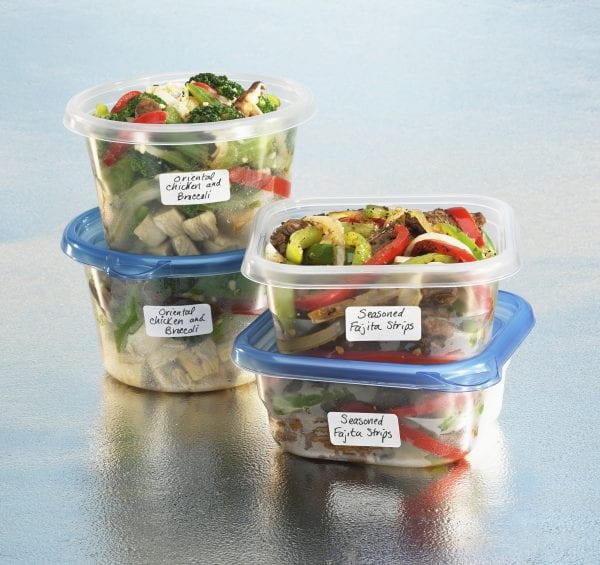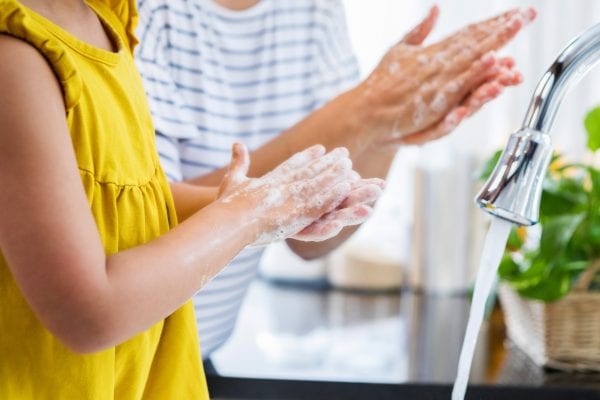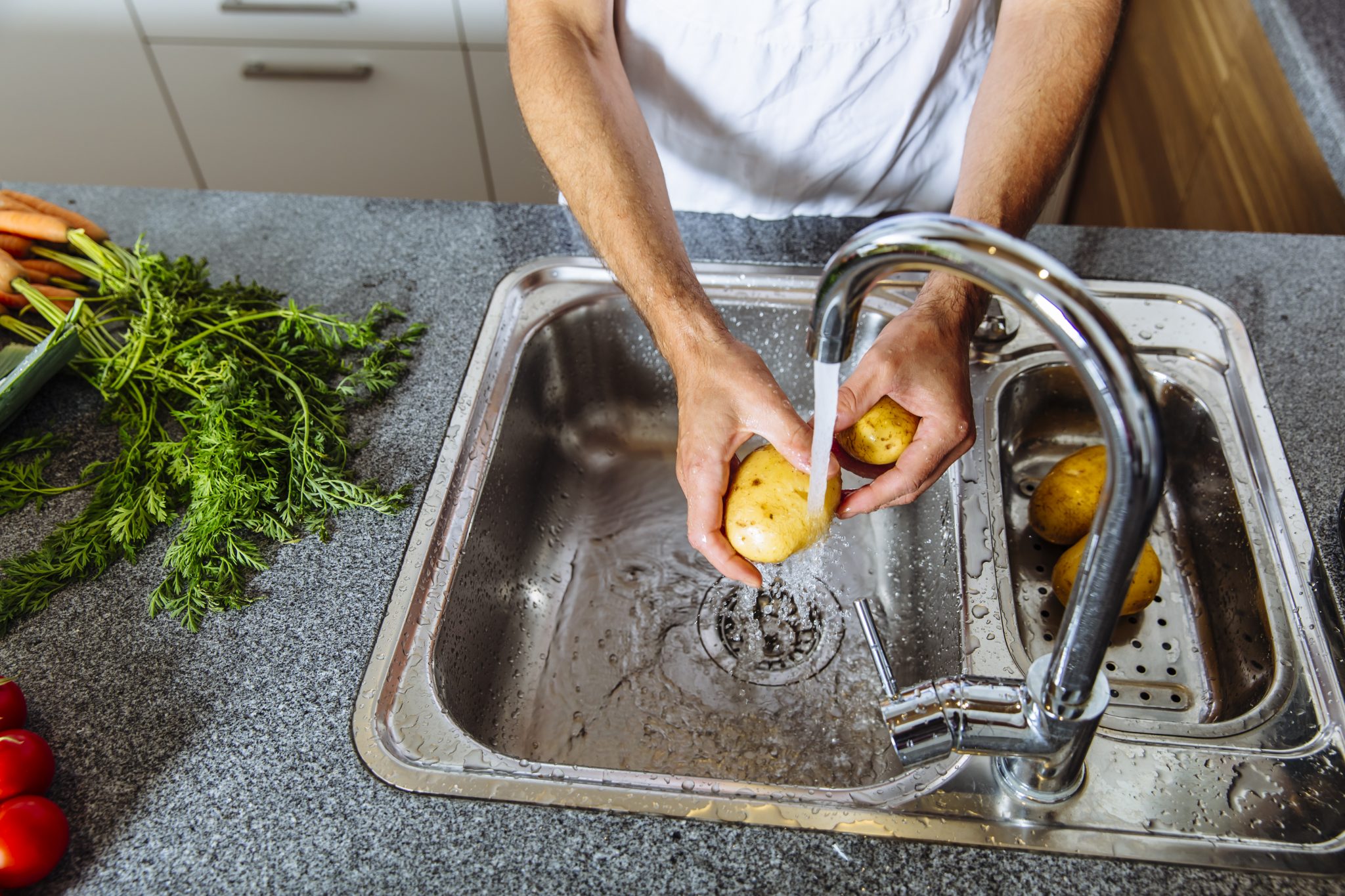Food Safety

Learn simple steps you can take at home to keep your food safe and your family healthy.
 Few of us today raise the food we eat. That makes us dependent on farmers and food processors in the United States and around the world for our supply. As such, we need to trust that the food we eat is safe and to do what we can to keep it that way.
Few of us today raise the food we eat. That makes us dependent on farmers and food processors in the United States and around the world for our supply. As such, we need to trust that the food we eat is safe and to do what we can to keep it that way.
When we hear on the news about bacteria in the food supply, we cringe and think we are helpless against the large food processors. But this is not the case. Large food manufacturers want to sell you safe food because they want you to continue purchasing their products.
In this publication you will learn safe food handling practices that you can apply as you shop for food, store food items, cook and serve food, and handle leftovers.
Shopping for Food
The way you shop at your local grocery store can start you out with safer food. Place raw meats on the bottom of the cart so they will not contaminate any other food products. Also, do not allow cleaning products to come into contact with food items. Get a plastic bag on your way into the store and place the cleaning items in the bag to prevent cross contamination with the food.
At the checkout, ask the bagger to place the cleaning items back in the same bag and not in a bag with any food items. Place fresh meats in a plastic bag by themselves so they cannot contaminate any other foods. Place frozen foods together in another plastic bag; a block of frozen products will remain frozen longer.
You should go straight home after shopping. If you know you will not arrive home in less than an hour, take a cooler in which to store the refrigerated and frozen foods.
Storing Food Items
Put away frozen and refrigerated foods first. The temperature inside your refrigerator should be 40 degrees F or lower, and the freezer should be 0 degree F or lower. If you do not already have a thermometer in the freezer or refrigerator, consider purchasing one. This will allow you to tell if your foods are being kept at the right temperature. If you make a practice of checking the temperatures regularly, you might be able to tell when your freezer or refrigerator is having a cooling problem.
Place foods such as crackers, bread, cake mixes, and other dry foods that are stable at room temperature on shelves or in the pantry.
Never store cleaning items with food items. Under the kitchen sink is an excellent place to store cleaning products such as dish detergents, pot cleaners, and sanitizing solutions. Place other cleaning items in the laundry room or in a closet set aside for such items. If you have children, be sure to store cleaning products in a locked cupboard or another place where the children cannot get to them
Preparing to Cook
Wash Your Hands
 Wash your hands in the bathroom sink prior to preparing food in the kitchen. Do not use the kitchen sink. This is an excellent practice to keep dirt and bacteria from your hands out of the kitchen. A good hand washing takes 20 seconds. This gives you time to get your hands wet, apply the soap, and scrub your nails into the palm of each of your hands, washing each finger and fingernail. Once in the kitchen, you will wash your hands many more times as they become soiled in the meal preparation process, especially after handling raw meat and cutting up raw fruits or vegetables.
Wash your hands in the bathroom sink prior to preparing food in the kitchen. Do not use the kitchen sink. This is an excellent practice to keep dirt and bacteria from your hands out of the kitchen. A good hand washing takes 20 seconds. This gives you time to get your hands wet, apply the soap, and scrub your nails into the palm of each of your hands, washing each finger and fingernail. Once in the kitchen, you will wash your hands many more times as they become soiled in the meal preparation process, especially after handling raw meat and cutting up raw fruits or vegetables.
Clean Vegetables and Fruits
Vegetables should always be washed thoroughly under rapidly running cool water prior to eating or cooking. A scrub brush might be necessary to use on certain vegetables, such as potatoes for baking. Fruits should be washed like potatoes. This not only removes dirt and bacteria but any excess pesticides from the field.
Prepare Meats
Sometimes cooking meats takes advanced planning, especially if the meat (such as turkey) is frozen and must be thawed before cooking (table 1). Place meat in the refrigerator on a plate so that juices don’t drip on other foods. Thawing meat in the refrigerator is not the only acceptable method for thawing meats, but it may be one of the safest. You can thaw meats under rapidly running cool water or by placing the meat in cold water, but you must remember to change the water every 30 minutes. Some meats and other food items can be thawed in the microwave (see your microwave manual for instructions).
Table 1. Recommended Thawing Times for Meat
| Weight | Time to Thaw |
|---|---|
| 2 to 8 pounds | 1 day |
| 8 to 12 pounds | 1 to 2 days |
| 12 to 16 pounds | 2 to 3 days |
| 16-20 pounds | 3 to 4 days |
| 20 to 24 pounds | 4 to 5 days |
When preparing meats such as roasts, hamburger, and poultry, you should observe a few extra rules. Place meat on a clean cutting board or in a pan for cooking.
If you need to cut up a chicken, place it in a large mixing bowl or pan that will allow the juices to be kept from contaminating other surfaces and foods.
If you use a cutting board for slicing a roast before cooking it, make sure you sanitize the cutting board with a solution of 2 teaspoons of chlorine bleach per 1 quart of water before using it again. Flood the surface with the bleach solution and allow it to remain for at least 2 minutes; then rinse the board and let it air dry or pat it dry using fresh paper towels.
Wash the mixing bowl or other pans that have been contaminated with raw meat immediately after you have finished preparing your meat dish. Remember, don’t use a cutting board or any pot or pan that has come in contact with raw meat before properly sanitizing it.
If you drip any liquid from the meat onto the countertops, sanitize the counter immediately with a solution of 2 teaspoons of chlorine bleach in 1 quart of water before you cross contaminate any other food items. You can even put this solution into a spray bottle to make it easy to use as you follow these steps:
- Clean the counter. If you use a cloth rag, be sure to place it into a sink of hot water and chlorine bleach to sanitize the cloth after you have wiped up the spilled liquid. After the liquid is removed, the surface may look clean, but the bacteria are still present.
- To get rid of the bacteria, spray a mist of chlorine solution over the counter. Make sure you can see the dampness on the counter.
- Allow the solution to remain on the counter for at least 2 minutes.
- Wipe off the solution using a fresh paper towel. Remember, it takes time to kill bacteria. If you want to make bread on the counter surface, make sure the surface is completely dry before proceeding.
Cook the Food
Cooking food is your best insurance for killing bacteria. But remember, foods need to be cooked to different internal temperatures to ensure the death of the microorganisms (table 2). For example, the internal temperature of a meatloaf should be 160 degrees F. Measure the internal temperature of a food using a food thermometer. There are several types available for meat, candy, or both that have a temperature range of 50 degrees F to 220 degrees F.
Table 2. Correct Cooking Temperatures for Meat
| Type of Meat | Temperature |
|---|---|
| Ground meats (beef, veal, lamb, and pork) | 160° F |
| Ground poultry | 165° F |
| Steaks and roasts | 145° F (rare) 160° F (medium) 170° F (well done) |
| Poultry breast | 165° F |
| Poultry thigh | 165° F |
| Whole birds | 165° F |
Serving the Food
Serve hot food hot and cold food cold. It is important to remember that foods should not be out of their temperature range for more than 2 hours. Bacteria can grow more rapidly if foods are left at room temperature for more than 2 hours.
Take potato salad or other cold foods out of the refrigerator just before serving them. Enjoy your meal, but when the meal is finished, place all leftovers in the refrigerator for storage. If you have a large amount of meat or poultry left, it is best to cut the poultry off the carcass or place the meat in small containers to allow it to cool more quickly.
Table 3. Safe Refrigeration Times for Cooked Food
| Food | Days |
|---|---|
| Cooked ground beef | 4 days |
| Spanish rice | 3 days |
| Cooked beans | 2 days |
| Meat and vegetable stew | 2 to 3 days |
| Casseroles with meat | 2 to 3 days |
| Casseroles without meat | 3 to 4 days |
| Cooked vegetables | 4 to 5 days |
| Prepared puddings and custards | 2 to 3 days |
| Tomato sauce | 2 to 3 days |
Lunching on Leftovers
Label leftovers with the date and place them in the refrigerator. See table 3 for safe storage times. If the leftover looks or smells strange, throw it out! It is not worth you or your family getting sick over the cost of any amount of food. If a food is to be heated before you eat it, make sure it is heated to an internal temperature of 165 degrees F. Remember the best rule of thumb: When in doubt, throw it out!
 Revised by Janet Johnson, Regional Extension Agent, Auburn University. Written by Jean Weese, Visiting Professor and former Extension Specialist, and Janet Johnson both with Auburn University.
Revised by Janet Johnson, Regional Extension Agent, Auburn University. Written by Jean Weese, Visiting Professor and former Extension Specialist, and Janet Johnson both with Auburn University.
Reviewed March 2022, There’s No Place Like Home for Food Safety, HE-0733

